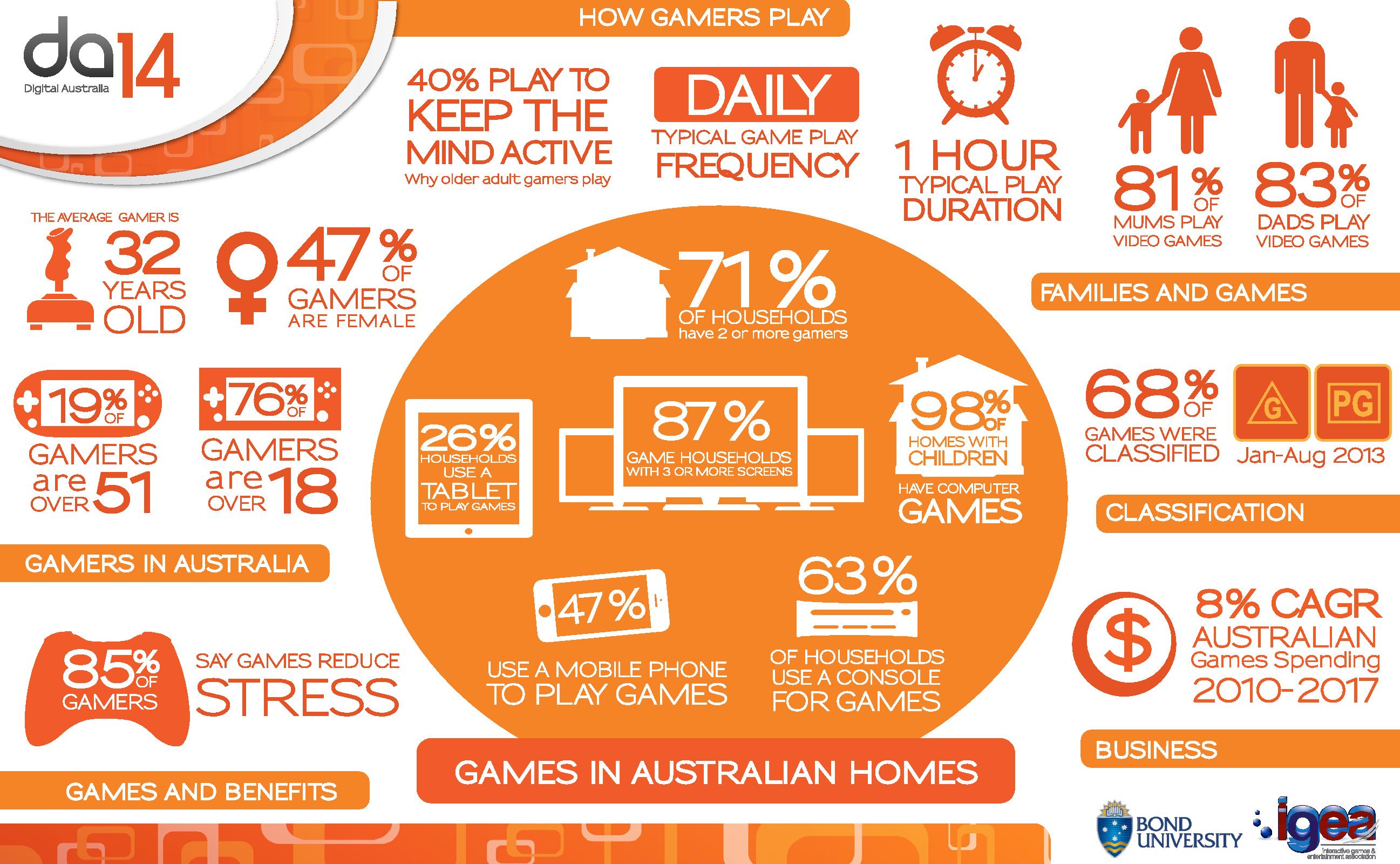-
Audience demographics are an integral aspect of a video game’s production, determining how developers establish a game’s genre, plot, characters, level of violence and marketing strategies (Wolf 214). Australia’s gaming demographic suggests a high level of video game interaction among both men and women, primarily over the age of 18, and families. In 2014 sixty-five percent of Australians play video games, including forty-seven percent of the game population that are female and seventy-six percent that are male (Digital Australia 2014 1). The typical player is a thirty-two year-old male, who plays one hour a day, and has eleven years of gaming experience. While most Australian gamers are over the age of eighteen, constituting seventy-six percent of gamers, twenty-percent are under the age of fifteen and nineteen-percent are 51 years or older (Digital Australia 2014 1). Australian families a profitable demographic for developers (In a Global), with eighty-six percent of parents playing video games with their children (Digital Australia 2014 1). Moreover, the popularity of gaming consoles is an important aspect of video game development; in 2014 sixty-percent of Australian households have a gaming console, fifty-three percent of households use computers for games, forty-three percent use mobile phones, and twenty-six percent use tablets (Digital Australia 2014 9).
-
The translation of narrative from one medium to another is oft cited as a difficulty. Academic, Justin Mack (p1-8), notes the increasing technological capabilities in video games, in terms of graphics, complexity, and ability to “immerse” oneself in gameplay, and examines the increasing quantity of games that resemble cinematic experiences. He seeks to understand this further analysing the relationships through the lens of his “beating heart” model. He states that there is a delicate balance between active gameplay and passive viewer experiences, and narrative and visual spectacle, as can be seen in the figure below (21-32).
-
Additionally, video games often feature common narrative tropes, and may heavily appropriate from other media sources without being direct adaptations (Mack 14-16). In Australian productions, the game L.A. Noire, is a detective video game that draws heavily on gangster and mobster themes, and uses film noir stylisation in its graphics and promotional content.
-
Character development and translation across mediums has seen a number of trends and changes over the years. Aldred (90-104) has identified a decline in the production of hollow characters, that players would be able to control and inject their own agency and personality into. The current shift has been toward more accurate portrayals of existing characters, which, while limiting the ability for players to immerse themselves within the game, increases the believability for players who are existing fans that subscribe to multiple elements of the franchise (Aldred 90-104). This is in line with Brookey’s findings (69-71), that the maintenance of existing fan culture is important in the success of an adaptation, and that unfaithful renditions serve to isolate existing devotees.
You might be interested in...




